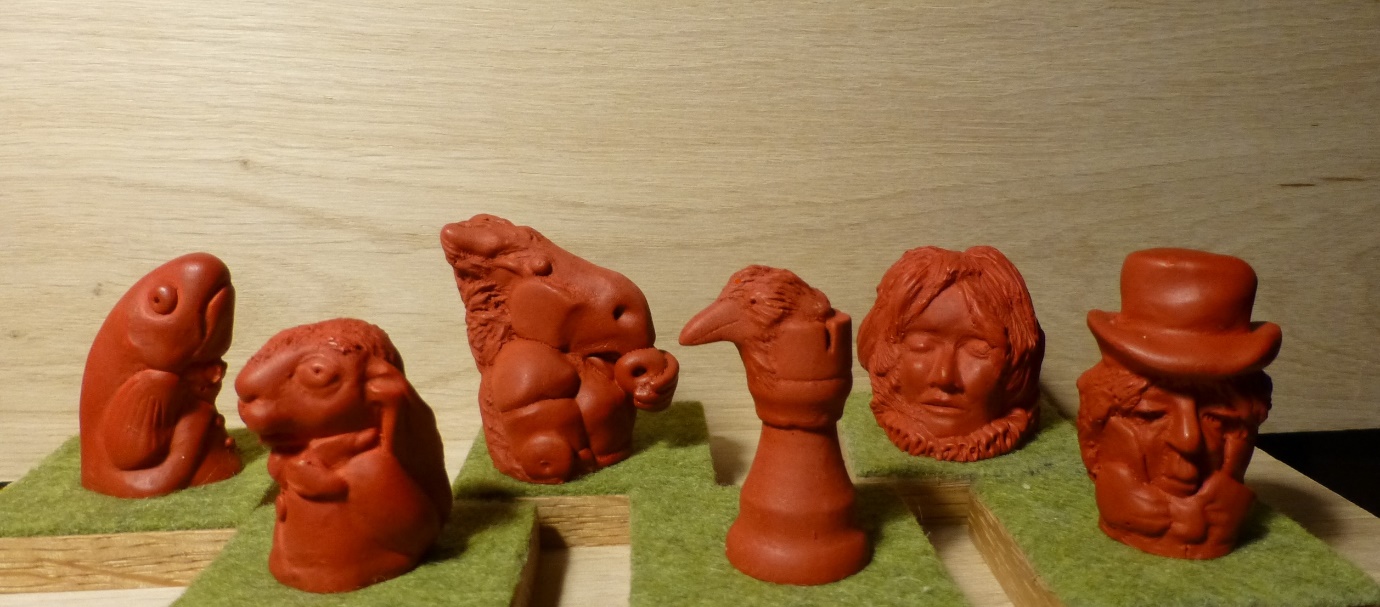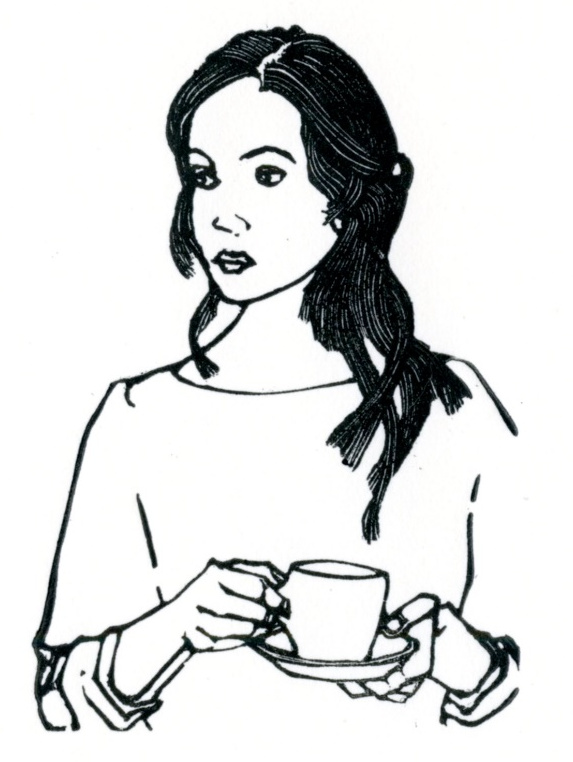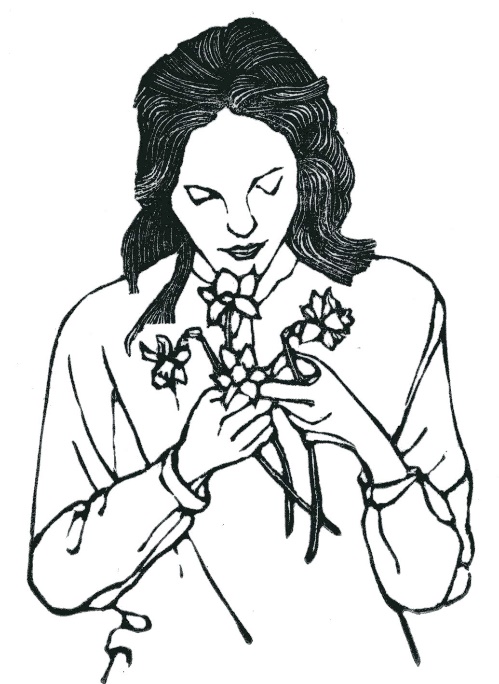Alice Boxes
At the start of the earlier editions of Through the Looking Glass its author, Lewis Carroll, gave a list that linked some of the characters that appear in the book with specific chess pieces. This Dramatic Personae as he called it, was removed after 1896, largely because those who read the book struggled to find any logical connection between, say, The Carpenter being designated a Knight or the Walrus a bishop, and their roles in the subsequent story.
Every chess set needs six different pieces. The fact that there are six different Alice Boxes means that, in theory at least, the figures they hold could be used to represent pawns, rooks, knights, bishops, kings and queens.
Who might play what, is a matter of taste.

The March Hare
Alice in Wonderland, with its famous illustrations by John Tenniel, was first published in 1865. Its author, Lewis Carroll, whose real name was Charles Dodgson, was a mathematics don at Christ Church, Oxford.
Fifty years later, members of its sister college in Cambridge, Trinity, were struck by the remarkable resemblance of three of their lecturers to Alice's companions at the March Hare's table. The mathematician Bertrand Russell looked just like the Mad Hatter, the Dormouse was the image of the metaphysician John McTaggart, and the March Hare himself bore an uncanny likeness to the philosopher G.E. Moore. To suggest that Tenniel was possessed of visionary powers is, of course, like so much of the world in which Alice finds herself, nonsense.
G.E. Moore is best known today for puzzling over what his fellow Cambridge philosopher Ludwig Wittgenstein termed Moore's Paradox. The most famous example of this apparent absurdity is often given like this: "It is raining but I believe it is not raining." As Moore pointed out, to say this sentence is absurd yet, at the same time, what it actually expresses makes perfect sense.
Alice
By the time Alice arrives at the Mad Tea Party she has already, and on several occasions, dramatically changed shape, had a crisis over who exactly she is, almost drowned in a pool of her own tears, been attacked by a stone throwing mob, narrowly avoided being eaten by a puppy, barely survived the violence of the Duchess's kitchen and been given a baby that, when it turns into a pig, she abandons. Any hope of rest, recreation or refreshment at the March Hare's tea table is quickly denied her.
Despite the empty chairs her hosts tell her there is no room, no-one gives her anything to eat or drink, the riddle she is set to guess has no answer and she soon becomes completely baffled by every turn the conversation takes. Any attempt Alice makes to educate her fellow guests as to what she believes to be acceptable tea party manners is either ignored or rudely refuted. In the end all she can think to do is to walk away in disgust.
What Alice fails to understand when she is in Wonderland, but masters in Through the Looking Glass, is that all social interactions — particularly those dependent on language — are only possible if everyone has learnt the same set of artificial rules necessary to make sense of an otherwise nonsensical world.
The Mad Hatter
The Mad Hatter's concept of Time, as a real person with whom he has quarrelled, allows him to play a flurry of word games, none of which Alice is able to grasp. He creates a pun on her use of the word beat, interprets the metaphor murdering time literally, and uses the absence of Time Personified to explain why the Mad Tea Party is trapped forever at six o'clock.
Although Alice is unable to understand much of what the Hatter, the Hare and the Dormouse are saying, she does have one major advantage over them in that she alone is able to escape the perpetual teatime time loop to which they are bound. When she has had enough she simply gets up and leaves, something the others are apparently unable to do.
One engaging solution as to why Lewis Carroll allowed Alice to escape is that he, or rather his alter ego the mathematician and logician the Rev. Charles Dodgson, was using the Mad Tea Party to poke fun at what he regarded as a dangerous contemporary craze for abstract mathematics involving indefinable concepts such as pure time.
He allows Alice, his beloved innocent abroad, to evade both the slippery, inexactitudes of words and the horrors of what he saw as an assault on the God given and incontrovertible truths of traditional mathematics.
The Fish Footman
Alice spends much of her time, in both Wonderland and Through the Looking Glass, vainly trying to make sense of, and bring order to, the chaotic worlds into which she has entered. Everyone she meets, even the most minor characters, add to her sense of unease. It comes as no surprise, therefore, that The Fish Footman, who appears only briefly with a invitation to attend the Croquet Match, is remarkably similar to some of the babewyn that appear frequently in medieval art.
These strange conjoined human and animal figures inhabit the margins of manuscripts and, when carved in stone or wood, the edges of cathedral roofs and the undersides of misericords. Their purpose seems to have been to represent an alternative to the ordered world of Christendom: a world turned upside down where disguise, masks, mummers and misrule held sway. It's not clear whether the craftsmen who made them approved of their creations, or whether they intended them as warnings as to what might happen if the established order was swept away.
The Reverend Charles Dodgson, the creator of Alice, hid behind his pen name, hated being identified as Lewis Carroll, and treasured his anonymity as an obscure and ineffective lecturer in mathematics and logic.
The Monstrous Crow
Rather oddly, considering the variety of different meanings the word Rook enjoys and how much he loved making and using puns, Carroll made no attempt to introduce the chess piece of the same name into Through the Looking Glass. (There are no bishops either, though this may be due to Carroll's respect for the Anglican Church of which he was an ordained minister).
The lack of wordplay on Rooks may be because Carroll preferred to call them by their alternative, and old fashioned, name of Castles, a usage that was frowned on at the time by serious chess players. Records of Carroll playing chess seem to imply he was a very average player. However, other members of the corvid family do appear.
A Raven is the subject of the notorious riddle with no answer the Mad Hatter asks Alice, and The Monstrous Crow darkens the sky, terrifies Tweedledum and Tweedledee, and causes a hurricane as it sweeps down on the forest in its attempt to seize them.
The Crow's appearance at the end of a chapter in which Alice has had to confront the possibility that she may only exists as a figment of someone else's dream may be coincidental, or it may be a symbol of existential dread. As with so much else in the Alice books the reader is left free to decide.
The Red Knight
The Red Knight is unusual in the Alice books in that he is exactly what he seems to be. He is a piece in a chess game that tries to take Alice and so prevent her from becoming a queen.
His failure to do so is due to the intervention of The White Knight who, unlike his opponent, is a mass of absurdities. He is an inventor of useless gadgets, a collector of useless objects, a fantasist, a sentimentalist, a master of semantics, an unintentionally comic poet and a hopeless horseman.
The latter might make one expect him to lose his battle with the Red Knight, but the Rules of Battle to which they both rigorously adhere — falling off when hit, falling off if they miss, holding their clubs like puppets in a Punch and Judy show — seem, inevitably perhaps because this is a Looking Glass world, to mean that any useful skill is negated and victory goes to the unexpected.
The Red Knight, though, is completely happy with the result, shakes hands and — a thoroughly competent rider — gallops away leaving the White Knight to see Alice safely home.
If, as many believe, The White Knight is a self-portrait of Carroll, then perhaps his readers should look to see themselves as the Red — eager participants in the same story, thankful to be there, but destined from the start never to be wholly equipped to overcome, or fully understand, its complexities.

